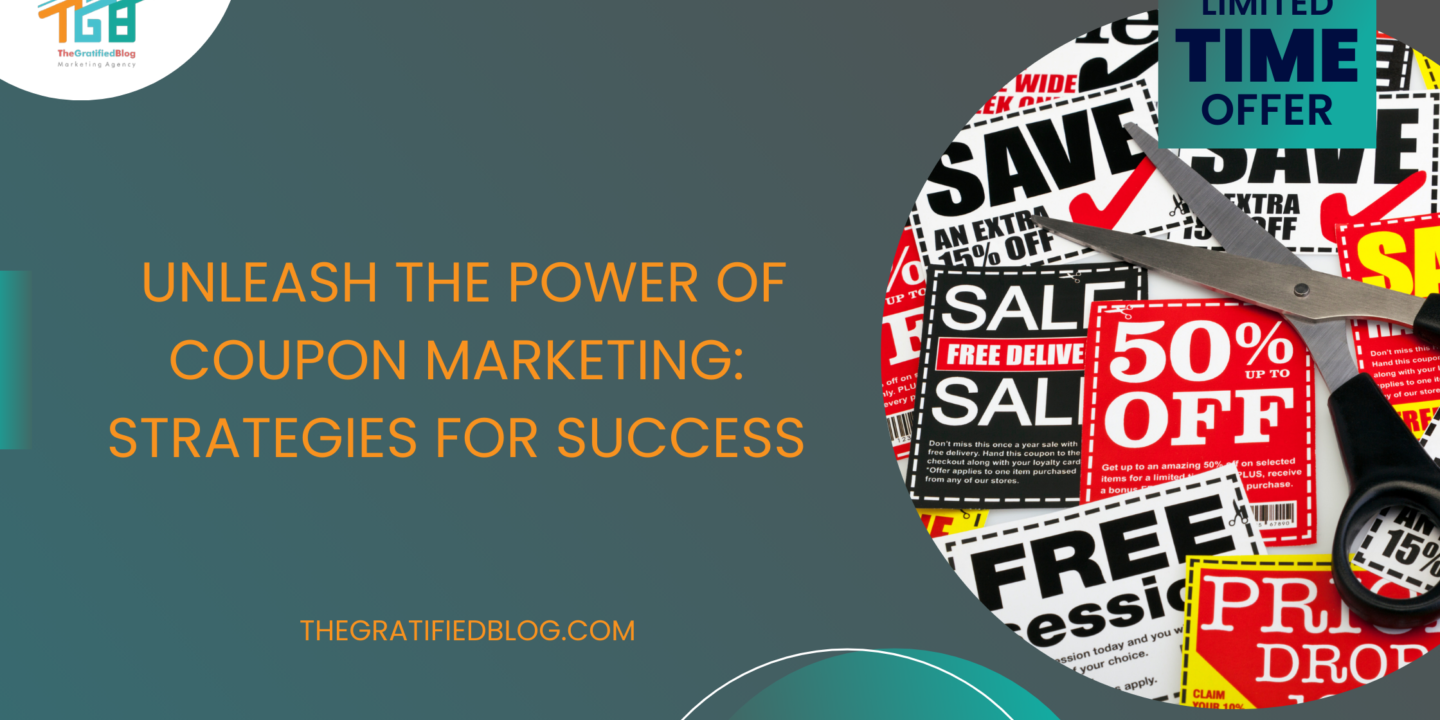
In the dynamic landscape of modern marketing, one strategy continues to wield significant influence and drive customer engagement: coupon marketing. Coupons have long been recognized as powerful tools for attracting, retaining, and delighting customers.
From the early days of paper clippings to the digital era of mobile apps and email promotions, coupon marketing has evolved into a multifaceted approach that businesses of all sizes can leverage to boost sales and foster brand loyalty.
In this blog post, we’ll delve deep into coupon marketing, exploring its evolution, effectiveness, strategies for success, challenges, and future trends.
Come along with us as we uncover the hidden insights behind the power of coupon marketing and discover how it can drive your business ahead to the heights of success.
What Is Coupon Marketing?
Coupon marketing refers to the strategic use of coupons, discounts, and promotional offers as part of a company’s marketing strategy to attract and retain customers, stimulate sales, and enhance brand loyalty.
Why Coupon Marketing Works?
Psychological factors behind coupon usage:
Coupon marketing works due to several psychological factors that influence consumer behavior. Firstly, coupons trigger a sense of urgency and exclusivity, encouraging customers to take immediate action to avail of the discount before it expires.
This sense of urgency triggers the fear of missing out (FOMO), driving impulse purchases and increasing sales volume. Secondly, coupons provide a perception of value and savings, satisfying consumers’ desire to get the best deal and feel financially prudent. This perception of saving money can also lead to a positive emotional response, enhancing customer satisfaction and loyalty.
Influence of discounts on consumer behavior:
Discounts play a significant role in shaping consumer behavior and purchase decisions. The prospect of saving money through discounts motivates customers to make purchases they might otherwise procrastinate on reconsider. Discounts create a sense of perceived value, making products or services more attractive and affordable to a broader audience. Moreover, discounts can act as incentives for first-time buyers, encouraging them to try a product or service with reduced risk, thus expanding the customer base. Additionally, discounts can drive repeat purchases and foster customer loyalty by rewarding regular customers with exclusive deals and incentives.
Case studies or examples of successful coupon marketing campaigns:
Numerous successful coupon marketing campaigns showcase the effectiveness of this strategy in driving sales and engaging customers. For instance, Starbucks’ “Happy Hour” promotions offer discounts on select beverages during specific hours, creating buzz and driving foot traffic to stores. This campaign boosts sales during off-peak hours and encourages customers to try new products.
Another example is Amazon’s coupon codes for targeted promotions, such as discounts for Prime members or first-time app users, which incentivize desired behaviors like signing up for memberships or downloading the app. These case studies demonstrate how well-executed coupon marketing campaigns can yield tangible results in increased sales, customer engagement, and brand visibility.
Now, let’s understand the types of coupons in marketing
Types Of Coupons In Marketing
- Printable Coupons: Traditional coupons are physical vouchers that customers can print from various sources such as newspapers, magazines, or direct mail. These coupons typically feature a barcode or unique code that can be scanned for redemption discount at the point of sale.
- Digital Coupons: With the rise of digital technologies, coupons have transitioned to digital formats, making them more accessible and convenient for businesses and consumers. Digital coupons can be distributed via email campaigns, social media platforms, mobile apps, or websites. They often come in unique codes or clickable links that customers can use during online checkout or scan at physical stores.
- Discount Codes: Discount codes, also known as promo codes or voucher codes, are alphanumeric strings that customers input during checkout to obtain a discount on their purchase. These codes can be exclusive to specific promotions, customer segments, or time-limited campaigns, providing businesses with flexibility in targeting and tracking coupon usage.
- Mobile App Coupons: Many businesses offer coupons exclusively through their mobile apps to incentivize app downloads, engagement, and repeat purchases. These app-based coupons may include location-based offers, push notifications for timely discounts, and personalized recommendations based on user behavior and preferences.
- Loyalty Program Coupons: Coupons are often integrated into loyalty programs as rewards for customer engagement and spending. Loyalty program members may receive special coupons based on their loyalty tier, purchase history, or participation in promotional activities. These coupons can encourage repeat business and strengthen customer loyalty.
- Free Shipping Coupons: Free shipping coupons waive the shipping fees associated with online purchases, making them an attractive incentive for customers, especially for e-commerce businesses. Free shipping coupons can be offered as standalone promotions or bundled with other discounts to enhance the overall value proposition for customers.
Now, let’s delve into the strategies employed in coupon marketing,
Strategies For Effective Coupon Marketing
Targeting The Right Audience

Effective coupon marketing begins with identifying and targeting the right audience. This involves understanding your target market’s demographics, preferences, purchasing behavior, and pain points. Based on these criteria, you can segment the audience and develop personalized coupon offers that resonate with specific customer segments.
For example, if your data analysis reveals that a specific group of customers favor environmentally friendly products, you can tailor coupons for sustainable products to appeal to that audience. Targeted coupon campaigns increase the relevance and effectiveness of your offers and improve customer engagement and loyalty.
Creating Compelling Offers
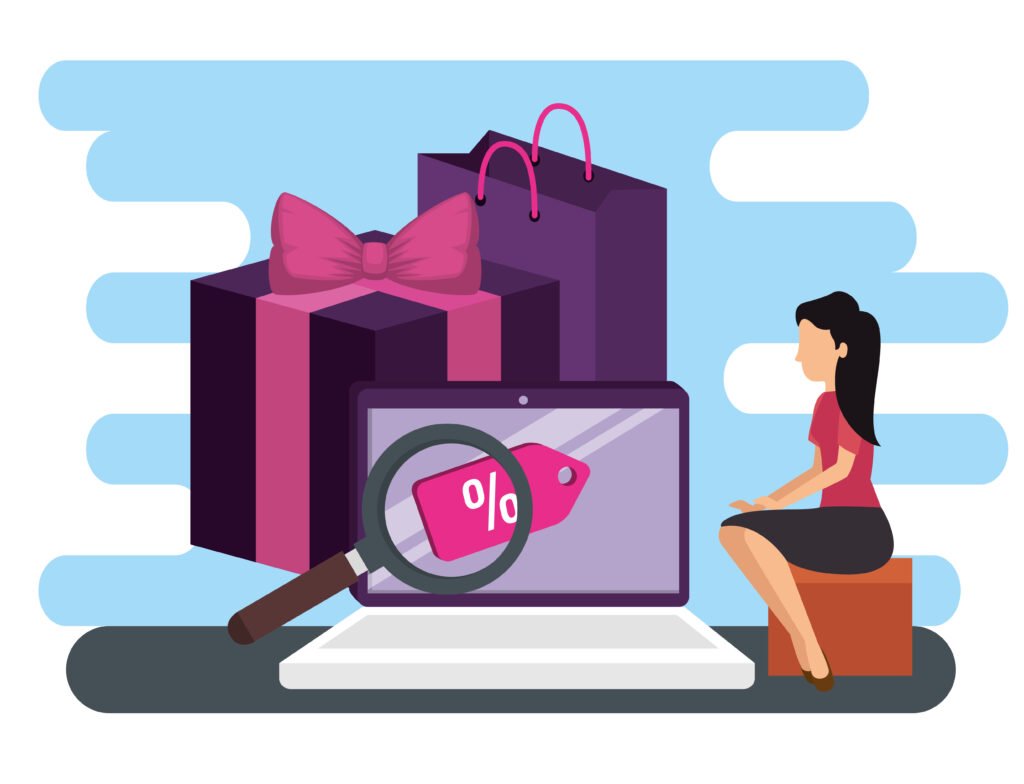
Compelling coupon offers are essential for grabbing customers’ attention and motivating them to take action. A persuasive offer should provide significant value to customers while aligning with your business goals.
This could include discounts (e.g., percentage off, dollar amount off), buy-one-get-one (BOGO) deals, gifts or samples, limited-time promotions, and exclusive access to products or services.
The key is to make the offer attractive enough to prompt immediate action without devaluing your products or eroding profitability. Additionally, highlighting the offer’s benefits in clear and persuasive language can enhance its appeal and encourage redemption.
Timing And Frequency Of Coupon Distribution

The timing and frequency of coupon distribution play a vital role in amplifying the effectiveness of your coupon marketing efforts. Timing refers to releasing coupons to coincide with customer behavior patterns, seasonal trends, holidays, or promotional events.
For instance, offering back-to-school discounts in late summer or holiday-themed promotions during festive seasons can capitalize on heightened consumer spending. Frequency refers to how often you distribute coupons, balancing maintaining customer interest and avoiding coupon fatigue.
A strategic approach involves spacing out coupon offers and leveraging customer data and feedback to optimize timing and frequency for maximum engagement and response rates.
Incorporating Coupons Into A Larger Marketing Strategy
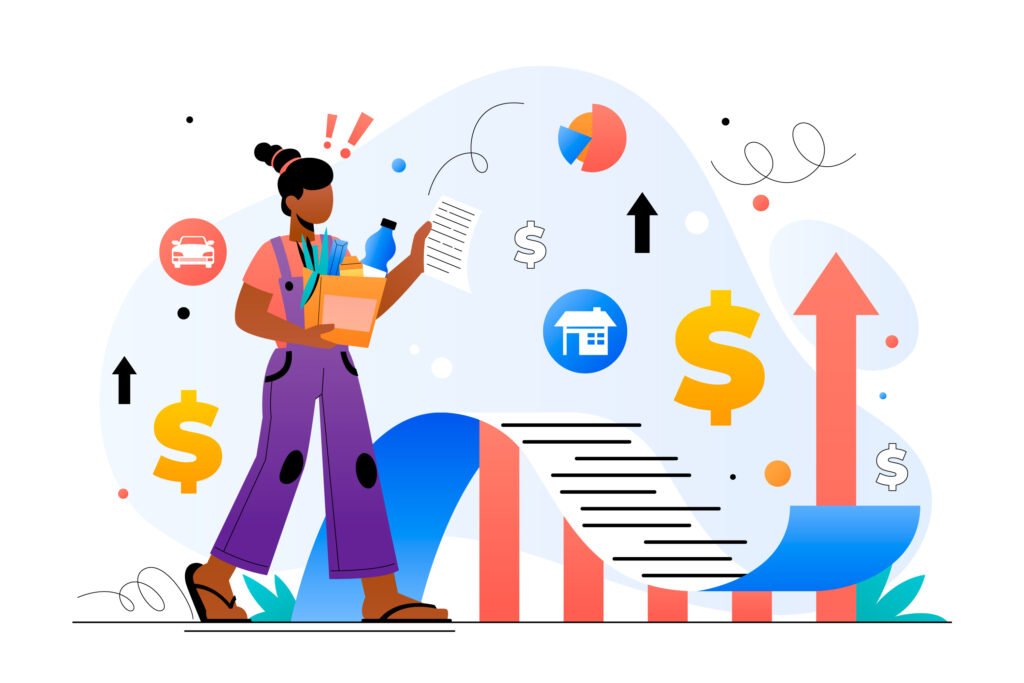
Coupon marketing should collaborate rather than integrate seamlessly into a larger marketing strategy. This integration ensures that coupon campaigns align with your brand messaging, product positioning, and business objectives.
For example, if your brand emphasizes quality and exclusivity, your coupon offers should reflect these values by focusing on premium products or limited-time promotions.
Moreover, integrating coupons with other marketing channels such as social media, email marketing, content marketing, and influencer partnerships can amplify reach, drive engagement, and foster a cohesive brand experience across touchpoints. By treating coupon marketing as an integral part of your holistic marketing strategy, you can effectively leverage its power to drive sales, customer loyalty, and brand awareness.
Now that you know the strategies, let’s explore the challenges and risks.
Challenges And Risks In Coupon Marketing
- Coupon fraud and misuse: One of the primary challenges in coupon marketing is the risk of fraud and misuse. Coupon fraud occurs when customers or unauthorized parties exploit loopholes or counterfeit coupons to redeem discounts illegitimately. This can result in business revenue loss, tarnished brand reputation, and legal repercussions. Moreover, misuse of coupons, such as sharing single-use coupons or using expired coupons, undermines the intended effectiveness of coupon campaigns and can lead to customer dissatisfaction.
- Over-reliance on coupons leading to devaluation: Another challenge is the potential devaluation of coupons due to over-reliance on discounts as a marketing strategy. Continuous and excessive use of coupons can condition customers to expect discounts for every purchase, eroding perceived product value and profitability margins. This devaluation can diminish brand equity, attract price-sensitive customers without fostering long-term loyalty, and create challenges in sustaining profit margins.
Strategies for Mitigating Risks and Maximizing Benefits:
- Implement robust coupon security measures: To combat coupon fraud and misuse, businesses can implement strong security measures such as unique coupon codes, expiration dates, redemption limits, and barcode scanning technology. Digital coupons with encrypted codes and tracking capabilities offer enhanced security and traceability, reducing the risk of fraudulent activities.
- Diversify promotional strategies: Avoid over-reliance on coupons by diversifying promotional strategies and incorporating other value-added initiatives such as loyalty programs, referral rewards, exclusive events, and product bundling. By providing diverse incentives and advantages, businesses can maintain customer engagement and perceived value beyond discounts alone.
- Set clear terms and conditions: Communicate the terms and conditions of coupon offers to customers to minimize confusion, prevent misunderstandings, and ensure compliance. This includes specifying redemption criteria, valid usage periods, restrictions on combining multiple coupons, and consequences for fraudulent behavior.
- Monitor and analyze coupon performance: Continuously monitor and analyze coupon performance metrics such as redemption rates, customer feedback, sales impact, and ROI (Return on Investment). By tracking key metrics, businesses can identify trends, assess campaign effectiveness, optimize coupon strategies, and make data-driven decisions to maximize benefits while mitigating risks.
- Educate and engage customers: Educate customers about the value proposition of coupons, encourage responsible coupon usage, and foster engagement through targeted communications, personalized offers, and interactive experiences. Establishing a favorable and mutually advantageous rapport with customers can enhance loyalty, increase repeat purchases, and mitigate risks associated with coupon devaluation.
Now, let’s delve into successful examples of coupon marketing.
Examples Of Successful Coupon Marketing Strategies
Amazon’s Prime Day
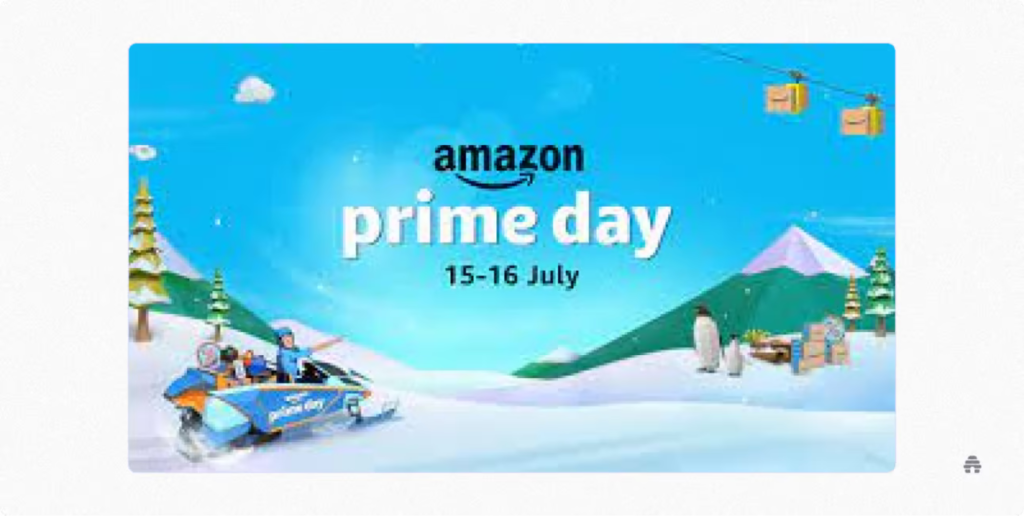
Amazon has established itself as a leader in coupon marketing, notably showcased during events like Prime Day. During Prime Day, Amazon offers discounts on a wide range of products exclusively for Prime subscribers, serving a dual purpose for Amazon.
Firstly, it incentivizes existing Prime members to interact with the brand and complete supplementary purchases actively, taking advantage of the limited-time discounts. This enhances customer satisfaction, boosts sales volumes, and drives revenue.
Secondly, the allure of Prime Day discounts attracts new members to sign up for Prime membership, enticed by the prospect of accessing exclusive deals and benefits. This dual impact underscores Amazon’s coupon marketing strategy’s effectiveness in retaining and acquiring customers, contributing significantly to its continued growth and market dominance.
Starbucks’ Happy Hour
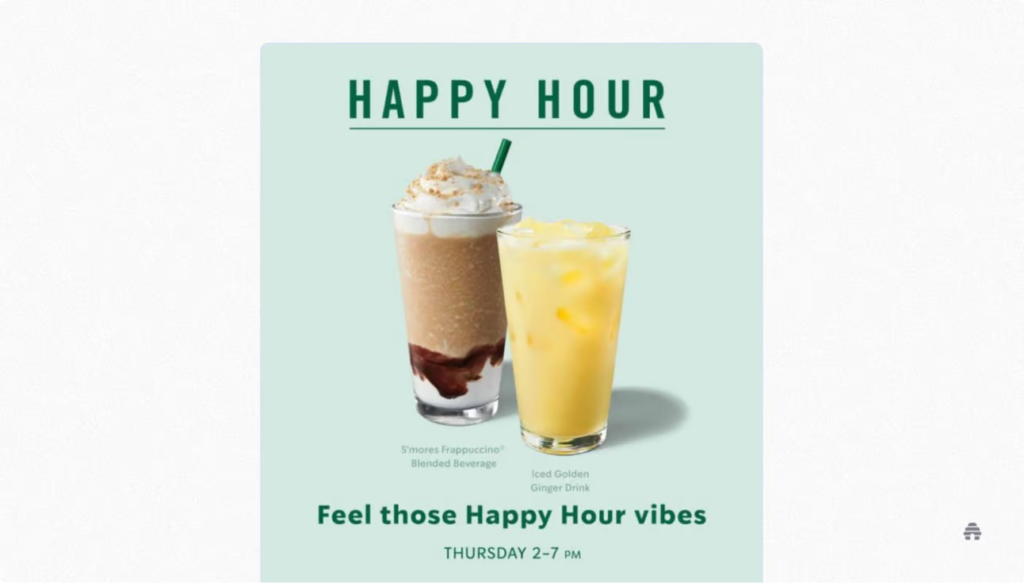
Starbucks and many other restaurants regularly offer “Happy Hour” discounts on food and beverages during specific hours. This strategic move aims to boost traffic and sales during traditionally slower periods.
The discounted prices during Happy Hour attract customers who may not have visited otherwise, increasing footfall and generating additional revenue for the business. This approach aligns with industry practices, where businesses leverage time-sensitive promotions to stimulate demand and optimize sales opportunities.
FAQs
Q1. What is coupon marketing?
A. Coupon marketing involves using discounts, promotional offers, and coupons to attract customers, boost sales, and enhance brand loyalty as part of a comprehensive marketing strategy.
Q2. How can businesses maximize the effectiveness of coupon marketing?
A. Businesses can maximize coupon marketing effectiveness by targeting the right audience, creating compelling offers, strategically timing coupon distribution, and integrating coupons into a larger marketing strategy for cohesive brand messaging and customer engagement.
Conclusion
Given your extensive knowledge of coupon marketing, why not implement this strategy in your marketing tactics to assess its impact on your business? By incorporating coupon marketing, you can evaluate its effectiveness firsthand and determine how it contributes to reaching your marketing objectives and propelling business expansion.
However, if you still have any questions related to the blog, please feel free to leave them in the comment section below. We will be happy to answer them.
Thanks for reading 🙂








No Comments